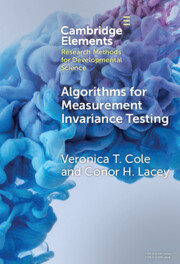Element contents
Algorithms for Measurement Invariance Testing
Published online by Cambridge University Press: 02 December 2023
Summary
Keywords
Information
- Type
- Element
- Information
- Online ISBN: 9781009303408Publisher: Cambridge University PressPrint publication: 21 December 2023
